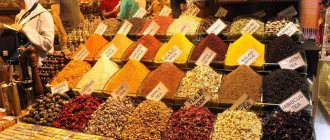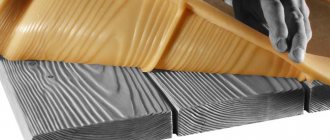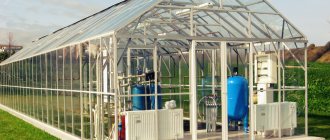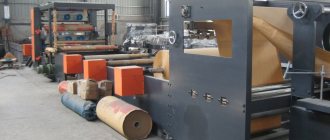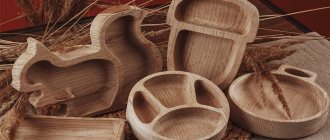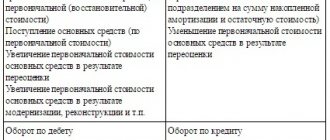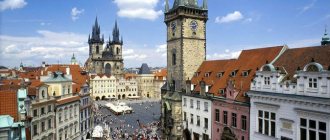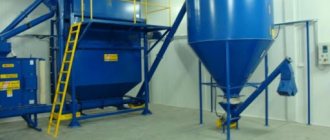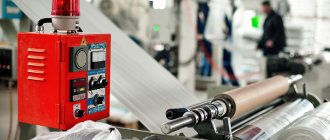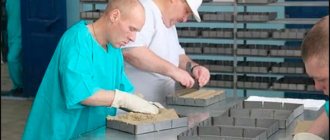The food market has always been and will remain in first place in terms of demand for products. This is not surprising, because this is where goods that are vital for every person are sold and bought.
Following closely behind is the textile industry. Surprisingly, in this segment, high demand for products coexists with insufficient supply from domestic manufacturers. The share of goods produced by factories and factories in our country is only a fifth of the entire market.
The rest is occupied by imported goods, imported both legally and counterfeitly. Of course, this state of affairs has the most negative impact on both Russian producers themselves and the country’s economy as a whole. There is another problem - textile production at domestic enterprises is often frozen for long periods due to the high cost of raw materials, supply interruptions and the need to modernize equipment.
State participation in the development of the industry
The situation must change radically, and the government is already beginning to take steps to improve it. In particular, a strategy has been adopted aimed at developing light industry in our country until 2020.
In turn, the state has seriously taken on the problem of domestic production: support is provided to enterprises both in the field of financing and subsidizing the purchase of raw materials, and in the issue of technical modernization of production. This allows us to think that changes are inevitable, and small improvements can already be observed today, in 2014.
Textile industry in Russia: current state
Today the situation is such that the share of imported products on the textile market in Russia still prevails. However, compared to the last decade, significant changes in the direction of its reduction are noticeable. Over the past 10-12 years, Russian light industry has grown at a record pace, and at the moment domestic textile production is valued at approximately 70-85 billion rubles.
The industry employs about 700 large and up to 5 thousand medium and small enterprises, the total production volume of which is about 200 billion rubles. At the same time, this segment still remains undervalued by Russian investors, which means it’s time to enter the market.
An average textile enterprise now costs 20-30% less than a food enterprise with the same level of profitability. Those entrepreneurs and investors who pay attention to this area of business today will be able to reap a good “harvest” in a few years with the right approach to business. We will talk further about how to competently organize textile production in our country.
We evaluate the market
When planning to sell home textiles, you need to study the market in which you will work. For example, that in the periphery and in megacities there is a completely different demand for such products. Thus, the population of small towns is interested in inexpensive textiles. Quality is not the main selection criterion for him. In large cities, on the contrary, high-quality home textiles are valued, regardless of their prices. The most popular are home textiles in the mid-price category. But this market niche is oversaturated with offers. Therefore, it will be difficult to enter it.
In order for your business to be competitive in prices and assortment, you will have to invest at least 500 thousand rubles. This money will go to:
- purchase of goods;
- purchase of commercial equipment;
- salaries for sales consultants;
- rent;
- purchasing a cash register;
- taxes;
- public utilities;
- promotion.
Many people decide to reduce the cost of business by opening a store with a narrow specialization, for example, bed linen. But this is a wrong decision. Experience shows that such stores operate at a loss.
Basic questions on organizing textile production
Of course, it is still too early to say that this is the most profitable business in Russia today. However, there is no doubt that the returns from such production can be quite high, and in the long term. This direction is suitable for strategic investors and entrepreneurs looking to the future.
Therefore, today it is important to approach the issue of organizing textile production from a completely new position, focusing on innovation and relevance. What points need to be taken into account when creating your own enterprise from scratch? The key factors are:
- Organization of the design department. In the modern world, you cannot do without the work of these specialists. One of the main conditions for high demand for your company’s products will be the relevance and originality of fabric design. Moreover, the development of new textile collections should be carried out regularly, and not one-time. Therefore, the plant/factory must have its own department with a group of designers working together and under the leadership of its owner.
- Organization of production itself. This issue requires no less attention. Where and by whom the fabrics will be made depends on the availability of sufficient investment. Thus, some entrepreneurs create their own production workshop from scratch, others place orders for ready-made designs between home-based workers. In addition, many fabric manufacturers in Russia locate their production in Chinese factories (due to the availability of cheap labor and good technical equipment).
- To organize your own textile production, you need to obtain the appropriate certificate for your products, think through and plan the fabric manufacturing technology, purchase modern equipment and hire personnel (from cutters and motor seamstresses to an accountant).
- To sell products, you will need to think about their transportation. If the enterprise is large, then you will need your own vehicle fleet. Small textile factories/workshops use the services of third-party companies.
- Like any commercial activity, the textile business requires advertising. There should be several effective channels: your own website on the Internet, advertising blocks in specialized magazines, your own booklets with fabric samples. A good (and even mandatory) addition would be participation in exhibitions organized for representatives of this market segment. This will allow you to make useful contacts in your field, expand dealer and retail networks for more efficient sales of products.
All these points are important and, moreover, mandatory stages in building a truly successful textile production in modern Russia. You cannot neglect any of them if you really want to organize a highly profitable business that can not only survive, but also function effectively for a long time.
Advertising: how to attract buyers
Well-thought-out and organized advertising has a great influence on attracting the attention of potential buyers. Don't get hung up on one thing. The more diverse the approach, the wider the target audience.
Considering that the modern world gives preference to the Internet, it is worth focusing on promoting the store on social networks, blogs, and groups. You might also think about creating your own website. We should not forget that the consumer, who has reached a mature age, prefers visual information. So you can use:
- advertisements in print media;
- on the radio;
- television;
- visual and tactile familiarization with products in the form of handed out booklets, leaflets, installation of pillars, banners.
Of great importance for promoting goods when opening a fabric store is the presence of beautiful packaging and an image of the store logo. This move will help make the point recognizable by a prominent sign with the original name. In general, all hope here is for imagination or turning to specialists.
Textile production technology
The key point that determines the entire production of textiles and the organization of its individual processes is the fabric manufacturing stage itself. It consists of several basic steps, which we will now look at:
- Preparation. Obtaining yarn from fibers by processing them - loosening, fraying, combing.
- Spinning gray fiber. Textile thread is obtained from isolated cotton fibers.
- Direct production of fabric on weaving machines.
- Final finishing procedure. As a result of this stage, the fabric acquires properties such as strength, softness, smoothness, waterproofness and others.
This is a general description, and each of the above stages has its own nuances.
How does the textile business work?
If you think that somewhere in the world there are workshops under the sign of KENZO or KVADRAT with large looms and pretty weavers, then you are mistaken. The textile business is tricky, especially in the high segment. There are factories , and there are so-called publishers . They differ from each other in much the same way as the “paper” publishing houses familiar to the Russian ear differ from printing houses. That is, publishers develop the design of the fabric (in a broad sense, from the color palette, patterns, to the weaving method and composition), and then place an order with the factory . They take the resulting circulation to their warehouse (usually several kilometers per color at once!) and then gradually sell it off.
Thus, at one of the main European exhibitions, Maison et Objet in Paris, a huge pavilion was allocated, which is called Editeurs. And every year in May, the Proposte exhibition is held at Villa Cernobio on Lake Como, where only (and only!) manufacturers can exhibit.
Everyone does their own thing.
Publishers organize sales, support dealer networks, maintain huge warehouses with leftover fabrics, research the market and, most importantly, engage in development. The clearest example of such a publishing house is the company Kvadrat . This is one of the main innovators in textiles, whose products are highly respected. Kvadrat fabrics are produced in a variety of places, from the USA and Europe (the most technologically advanced) to Turkey (most of the wool is woven in Ankara), but all the processes, fiber processing methods, weaving and joining of threads/materials and so on are all developed by the publishing house itself and is under his close control.
And this work has recognition - Kvadrat fabrics are used by almost all the top players in the furniture world: B&B Italia, Fritz Hansen, Moroso and... of course, Smart Balls :) All the furniture for our first European stand at the Salone del Mobile 2011 in Milan was made in close cooperation with Kvadrat specialists.
But still, what prevents the factory from organizing its own warehouse? Nothing!
Many people do this. BUT! If the factory does not seriously invest in development, then the resulting fabrics will be the same as homemade calendars and other souvenir products that ordinary Moscow printing houses regularly treat us to before the New Year.
There are, of course, exceptions to this rule. And the exceptions are outstanding - these are, first of all, the wonderful Thai textiles Jim Thompson and the American brand Maharam . These are manufacturers who pay great attention to scientific development and design, and achieve simply incredible results. But not only the quality, but also the pricing policy of these companies allows us to classify them rather as publishing houses.
It seems that the price is already serious, and the composition is good, and the technical characteristics are not bad - but why, why is it so boring?
Unfortunately, all large warehouses of interior fabrics in Russia do not work with publishing houses, but carry everything directly from factories. It's easier and cheaper. But in a factory, people are usually simple... they will do what they are told. They will do it “conscientiously.” But where will they get what they need to do, who will tell them?... That’s why even in the segment of high-quality fabrics presented on the Russian market, there are so few interesting materials.
Of course, the worst thing is with drawings. Surprisingly, even a decent strip is very difficult to find in Russian warehouses. We think that this is due to the overlap of two factors: the taste of ordinary Italian (or, God forbid, Turkish) guys “from the factory” and the taste of our buyers... And as a result, horror comes to Russia in beige and brown tones. And then children grow up in the midst of this, grow up - and as a result, we develop such a dull everyday and social life...
But if you limit yourself to only single-color options or, in rare cases, classic patterns, you can find quite worthy things among the “factory” offer. Moreover, the price for them can be several times lower than the cost of similar materials sold by “bigger” publishing brothers.
But if you want a bright, good design that you can live with side by side for many years, then you need to wait a month until this fabric arrives from Europe.
Necessary equipment
At the same time, a large number of different equipment is involved in all steps of the fabric manufacturing process. Some of the things that are mandatory for organizing a full-fledged production process include:
- roving machine;
- loom;
- weft-winding machine;
- winding machines and automatic machines;
- warping machine;
- sizing machines;
- glue pots;
- parting machines;
- knotting machines.
As you can see, the list of equipment is impressive. Therefore, a fully functioning textile production requires a large premises, several warehouses (for raw materials and finished products), as well as a sufficient number of employees to service it and organize effective management.

